DESIGN BRIEF
Background
Dumb infrastructures fail to enhance user experience and connectedness of the public, sticking to outdated designs and technologies.
Parks and open spaces are essential to the city life and with the right lighting, it can turn a once boring infrastructure into a unique joyful experience. By implementing fun lighting installations to the centre of compact open areas, we are able to draw in unexpected crowds and create fun for all ages.
The Aesthetics
Additionally, concepts must incorporate a sense of 1950s and 1960s into their design.
The Problem Statement
How can lights in public parks bring interaction and appeal back to parks for all ages?
BACKGROUND RESEARCH
The Hippie Movement
In order to ensure our product was to meet aesthetic criteria, as a team we researched into significant aspects that made the 1950s and 1960s such a radical time period. Research was invested into what the hippie movement was about and their overall purpose, conducting further investigation into specific cases that as a team, we though could help our ideation.
Colour Theory
Research about colour theory was abundantly available to our needs, as we were able to identify a clear link between colours and stress reliefs. Multiple scholar articles and websites were able to distinguish a relationship between each colour in the rainbow and a human emotion. As a team we decided the overuse of rainbows and peaceful emotions from this time period were to be incorporated into our design.
DESIGN SOLUTION
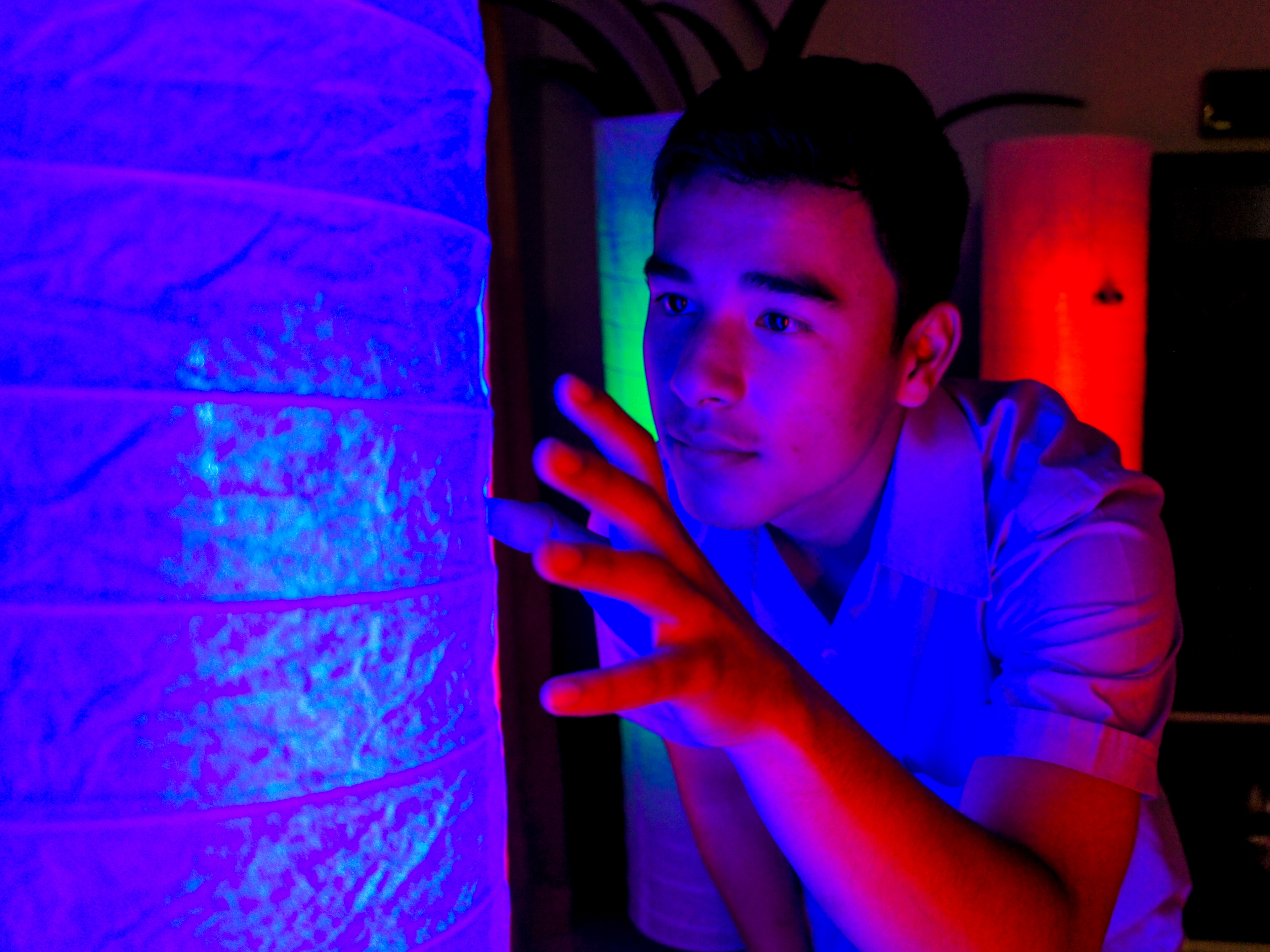
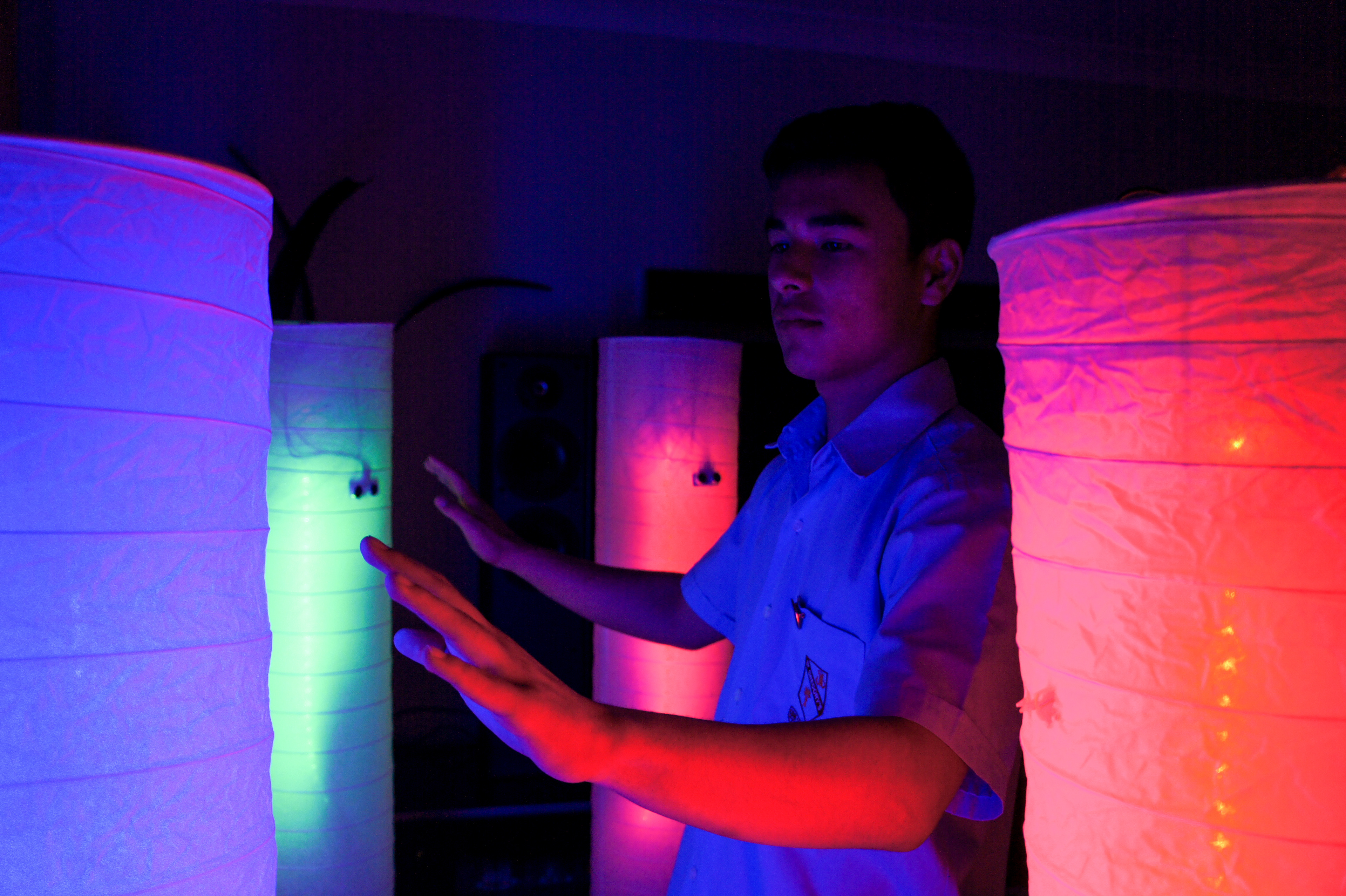


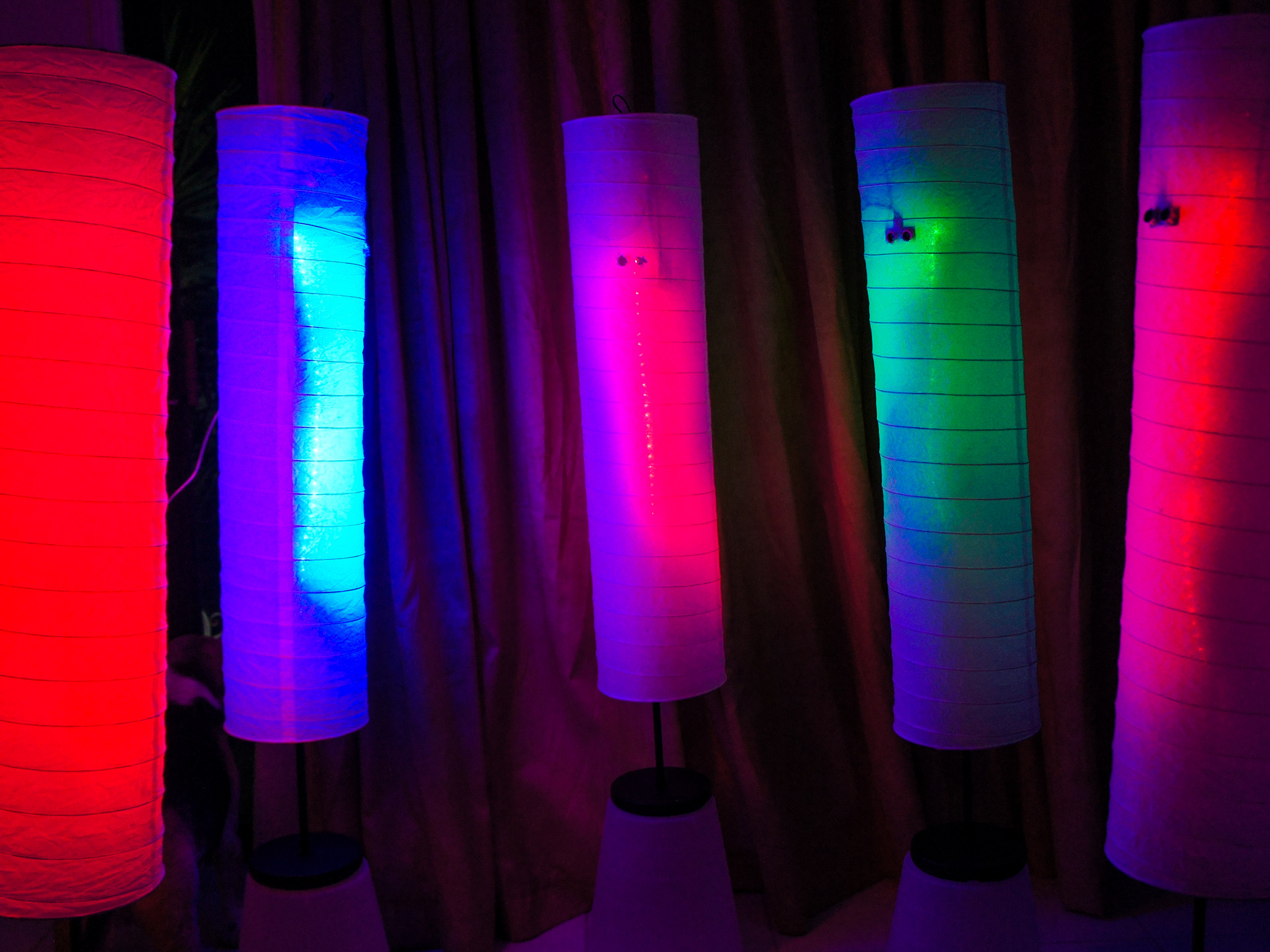
The Circle of Lights provides an immersive experience where users take control of the coloured lights surrounding them with their movements. By promoting peace and a focus on their mental wellbeing, users are able to enjoy a little fun exploring the extent of the installation.
Purpose
To relieve stress and pent up energy.
Features
7 coloured light poles, Colours change upon contact, Fun immersive experience & Stress reliever.
DESIGN ITERATIONS
Sketches and Storyboards
The Circle of Lights provides an immersive experience where users take control of the coloured lights surrounding them with their movements. By promoting peace and a focus on their mental wellbeing, users are able to enjoy a little fun exploring the extent of the installation.
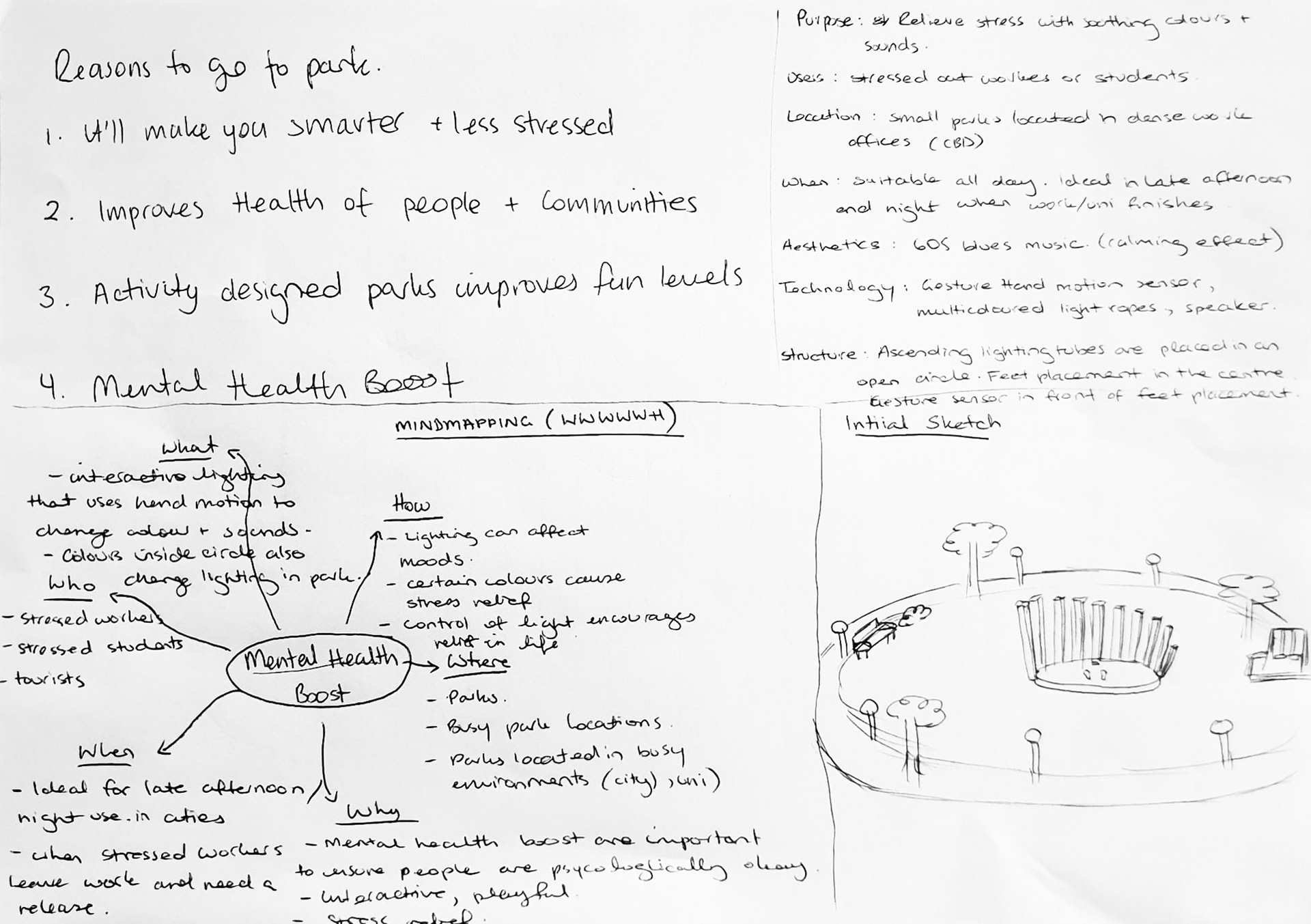
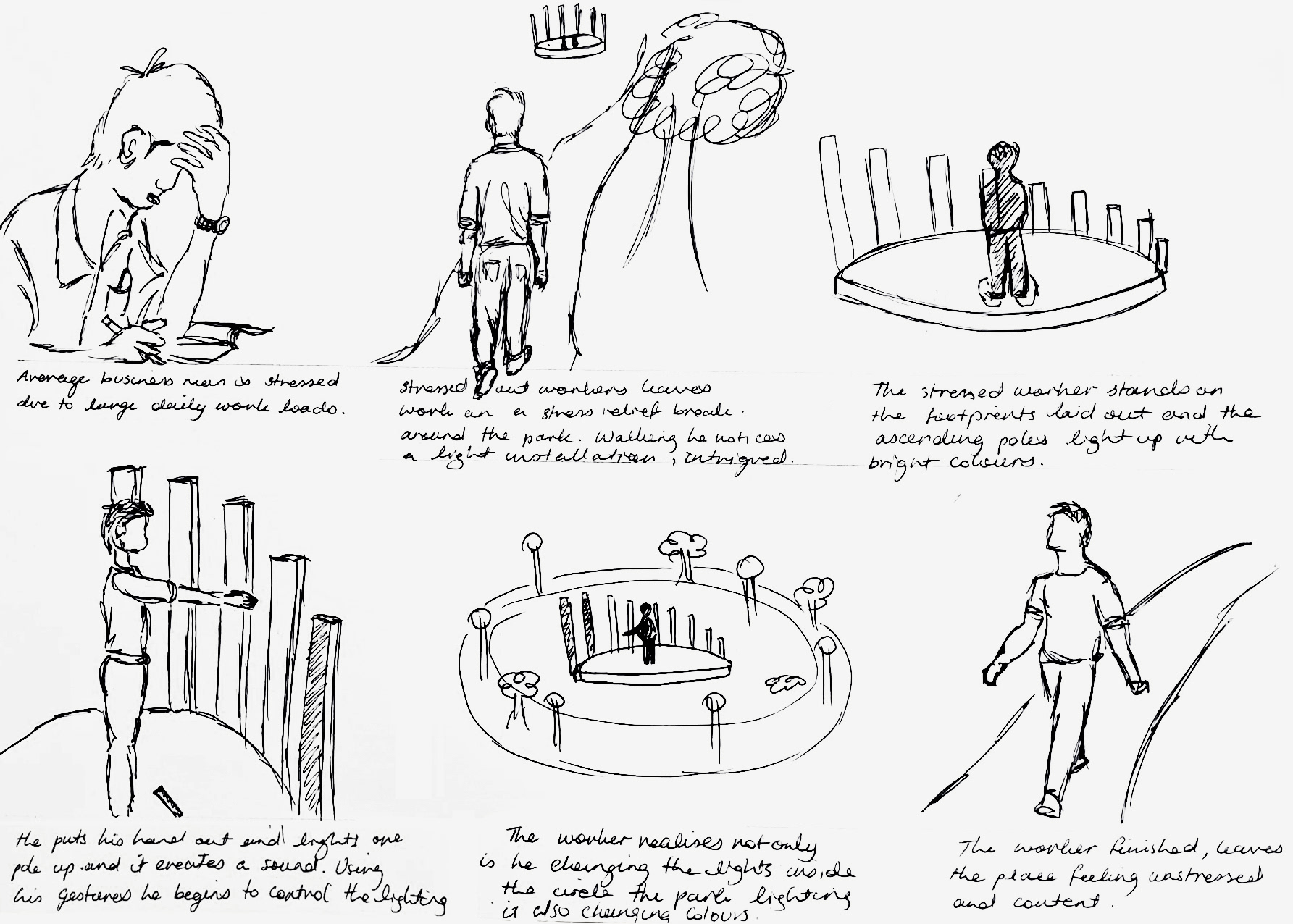
Primary Role | User Interface Designer
I was responsible for designing aesthetically pleasing presentation slides and report layouts, storyboarding, sketches and creating interactive prototypes (lo & hi fidelity). Additionally, I made minimal alterations to the prototypes code.
Secondary Role | User Experience Designer
I was responsible for conducting qualitative and quantitative user research i.e. interviews and questionnaires. This role also involved deeper insight into background research for colour theory and stress relief. From this fathered data I was able to identify multiple key user needs that helped drive and deliver a purpose for the product design.
Changed Role | Product Designer
As our concept developed over time, the team manifest had to adapt and my responsibilities were shifted. Due to previous experience in product design, my initial set roles were adjusted to include the role of Product Designer This involved sketching and envisioning physical models, as well as manufacturing the materials to create the product.
DESIGN PROCESS
Overview
A visual overview of the entire process from start to finish, specifying the work I contributed during each stage.
ITERATIVE PROCESS
Low Fidelity Prototyping
Paper was initially used to help the design team and users understand the interaction of the design. White paper was placed in front of the user, portraying an ordinary white light. User's quickly began to motion and hover above the paper as an instinctual behaviour. As a result, the white paper was replaced with coloured paper, depicting the lights changing with the user.
Feedback - In order to be more immersive and interactive large amounts of light poles were to be needed. Users enjoyed the idea of an immersive pod like light layout.
High Fidelity Prototyping
Users were able to interact with an fully functional light pole that changed with the user's hand motion. Motion sensors were used to trigger these interactions.
Feedback - Different sensors were needed for more accuracy in detecting hand motion.
Once again, more working models were needed to enable more engagement
Once again, more working models were needed to enable more engagement
Finalised Product
The finalised product took into consideration all users inputs and feedback. Six light poles were made and used during user testing, providing an immersive and enjoyable experience.
Feedback - All users situated themselves within the pod-like layout, commenting that it was the best position for full interaction. All users liked the ability to express themselves within the small area. Most users noted they were able to relieve pent up stress and energy.
REFLECTION
Personal Scope
Despite my assigned roles being adjusted to a large workload to ensure the success of the project, I believe I contributed greatly to the process of the project. I was able to gain and further develop a multitude of new skills within; Coding, Product manufacturing, Product demonstrations, User testing and Media production.
Final Product
Comparing the initial concepts created in the early weeks of the design against the final product produced, the overall design met our high standards. As a team we were able to successfully collaborate our areas of skills and expertise to continually develop and progress with our team idea and goals. We were able to create a vision where users within our target audience and outside could interact and enjoy the time spent within the installation. Successfully relieving them of their stresses and worries as they moved around freely within the free space we created.
Challenges
Multiple sources of power were explored throughout the construction of the project, unfortunately hindering our ability to power 7 functional light poles. As a result only 5 light poles were able to be demonstrated at the end.
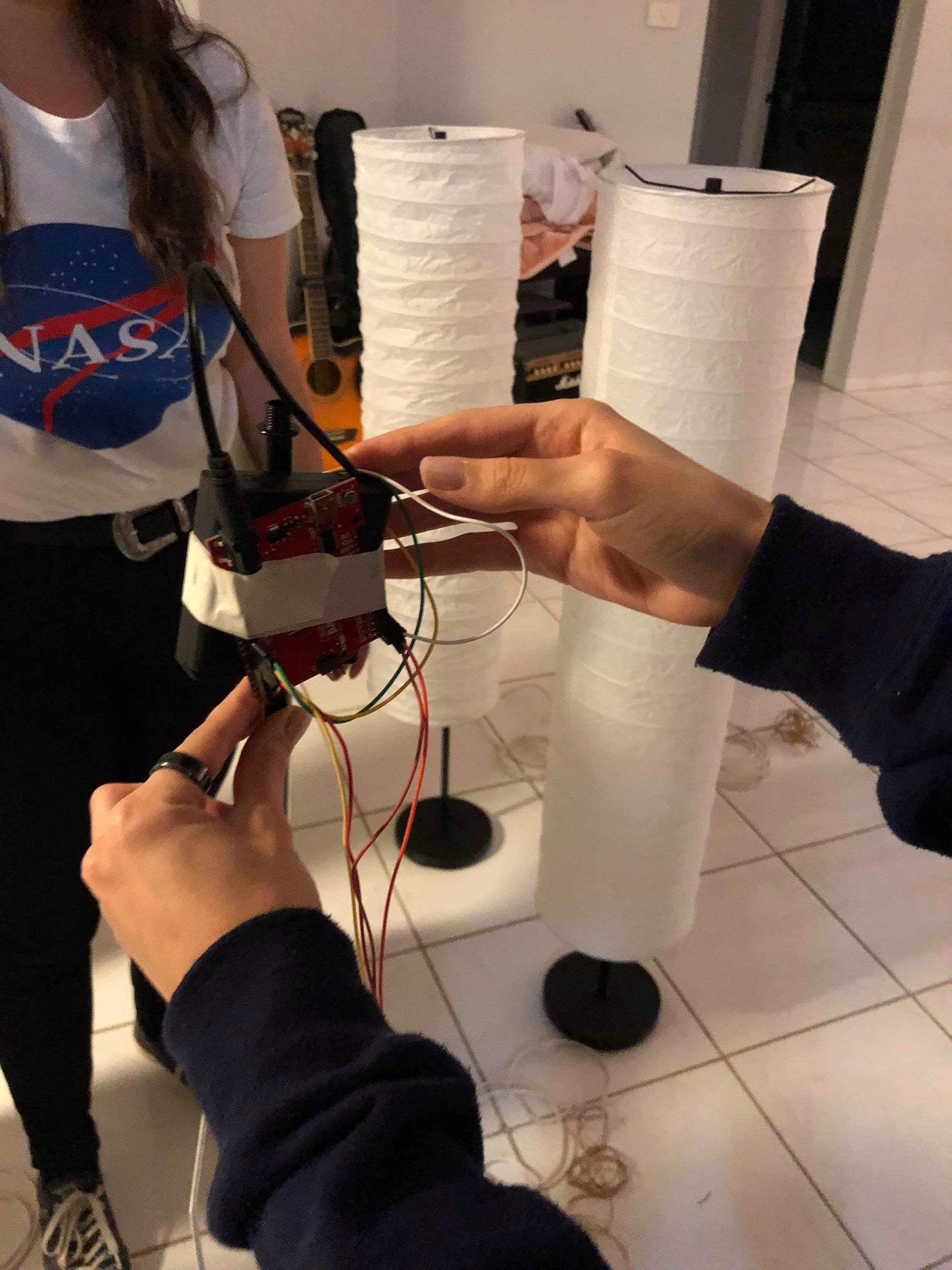

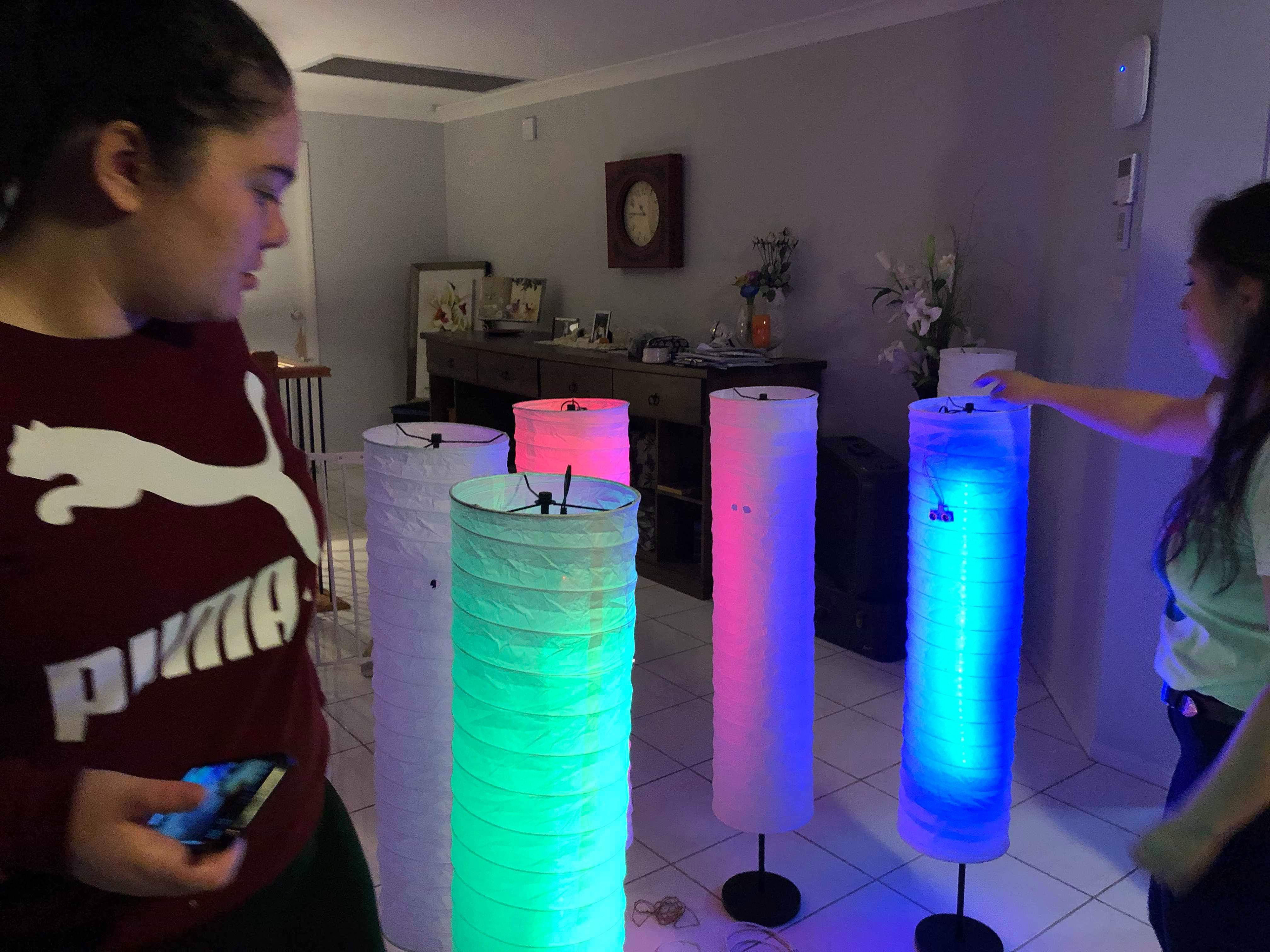
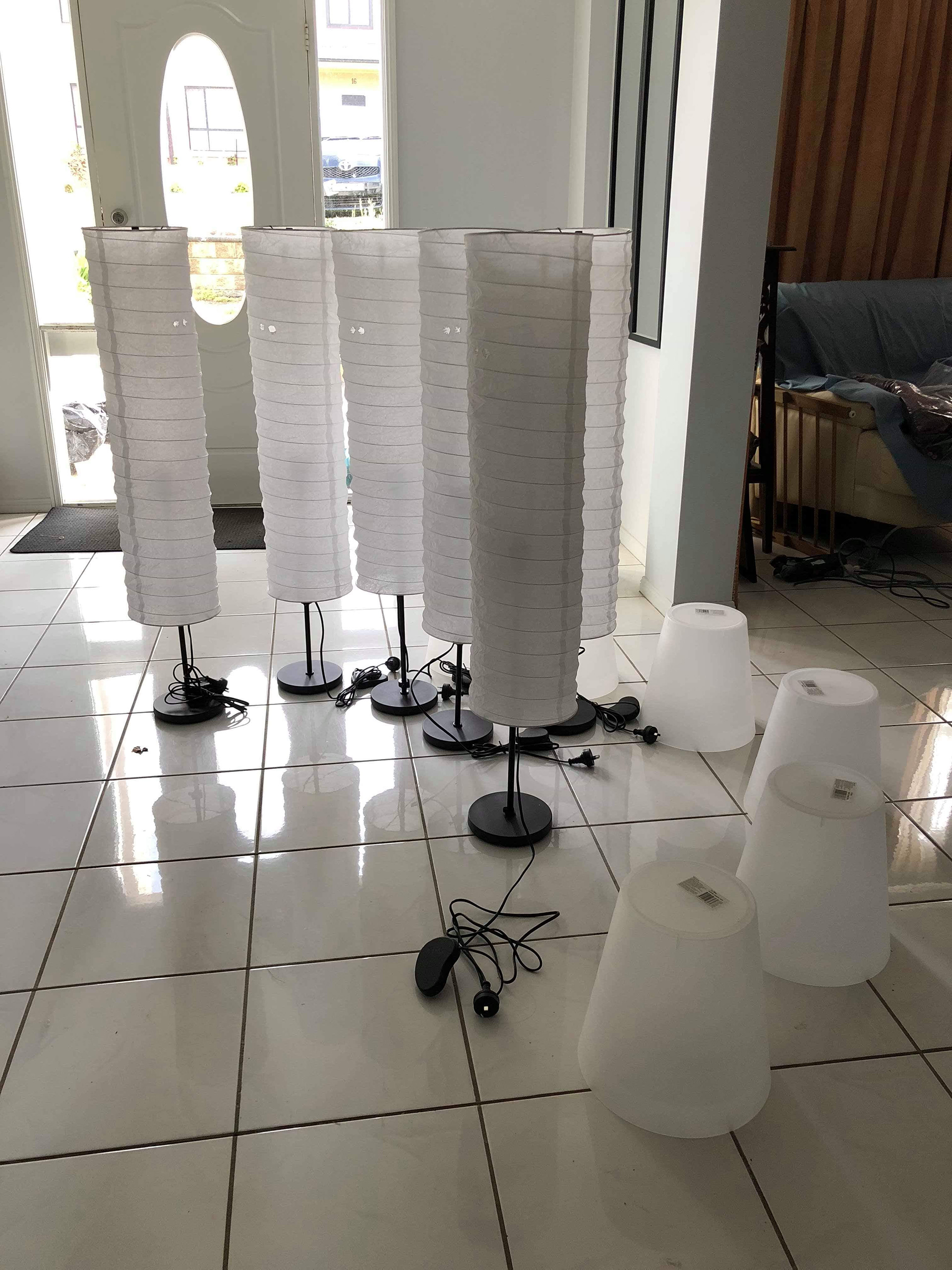
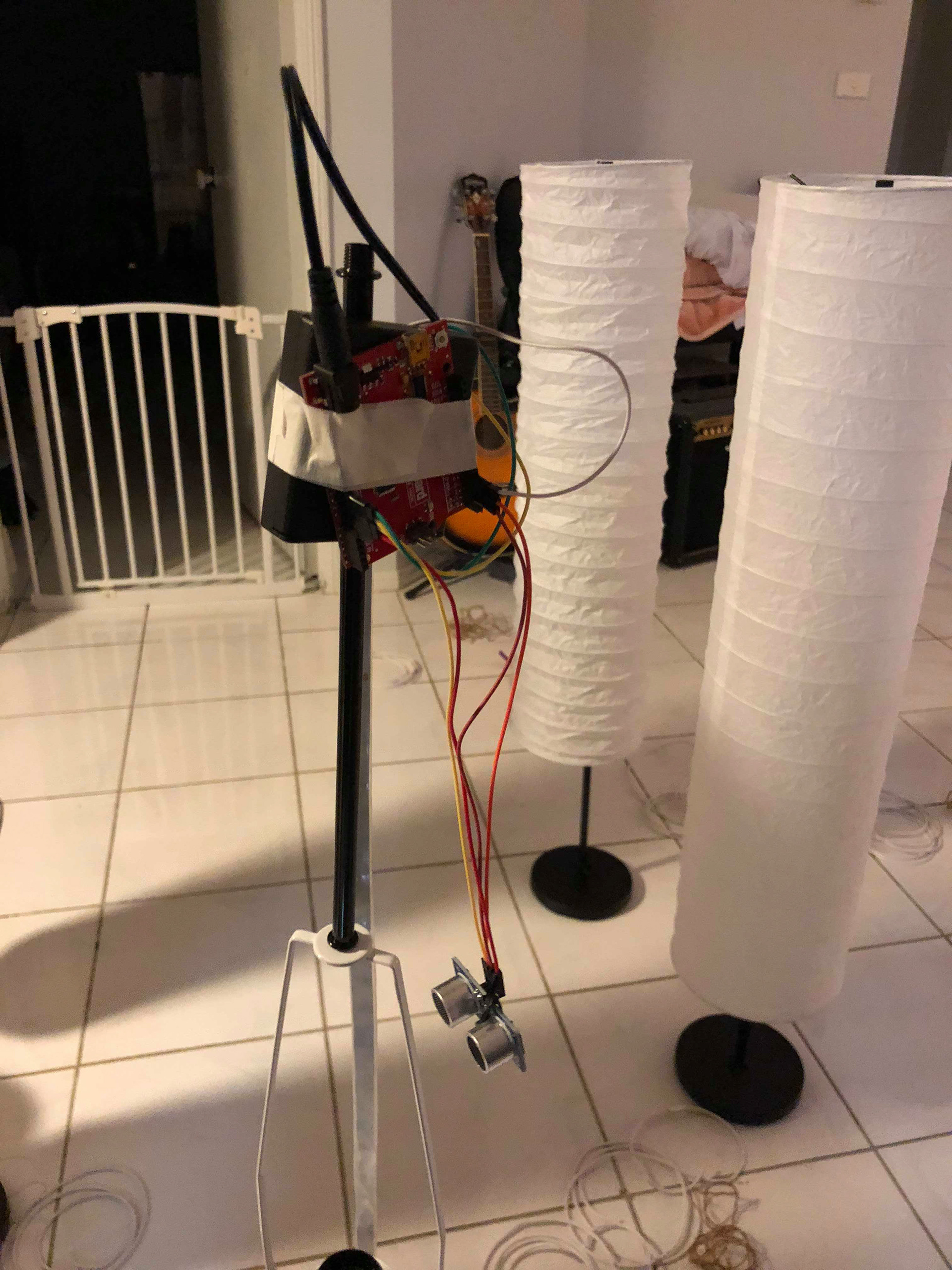



Improvements
In order to ensure our product design is able to withstand high usage time and outdoor settings, further materials need to be tested. Additional sensors need to be added to the bottom half of the pole for continuous use at lower heights. Delays need to be further tested as different users have different preferences.